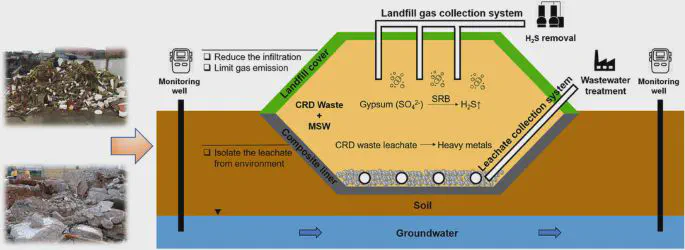Construction, renovation, and demolition waste in landfill: a review of waste characteristics, environmental impacts, and mitigation measures
Jul 1, 2022· ,,,,,,,·
0 min read
,,,,,,,·
0 min read
Zhikun Chen
Qi Feng
Rengyu Yue
Zhi Chen
Osama Moselhi
Ahmed Soliman
Amin Hammad
Chunjiang An

Abstract
Surface-washing agents are an option to enhance the removal of oil spilled or stranded on shorelines. The use of nanocellulose-based nanofluid as a surface-washing agent was studied by investigating its reactivity and effectiveness. Salinity was found to be the most influencial factor to facilitate oil removal with the nanofluids. Cations from salt can promote the adsorption of nanocellulose on the oil/water interface by reducing the surface charges. The experimental results revealed the nanocellulose could be effective at low concentrations but an excess of nanocellulose hindered oil removal due to an increase in fluid viscosity. A miscibility model was applied to verify this finding in a thermodynamics context. The biotoxicity tests showed that nanocellulose-based nanofluid did not have negative effects on algae growth and introducing nanocellulose into an oiled culture medium can actually mitigate the toxicity of the oil on algae. A comparison in removal efficiency with other surfactants demonstrated the potential value for shoreline cleanup due to the superior effectiveness of nanocellulose-based nanofluids. Overall, a nanocellulose has a high potential for application as a surface-washing agent for shoreline cleanup due to the low cost, low toxicity, and high efficiency.
Type
Publication
Environmental Science and Pollution Research